Judith Winslow Walcott

Bartolomeo Vanzetti and Nicola Sacco. Ben Shahn (1898–1969) © MOMA
“Deep in my subconscious the names Sacco and Vanzetti struggle to reach the surface. Their pain and sacrifice are mirrored in the news I see everyday about travel bans, the exclusion of Muslim ‘terrorists’ and Mexican ‘rapists’ from the US, and the push to build a wall along the US-Mexican border to prevent ‘undesirables’ from entering our country.”
I wrote the above in January a year ago, and the fear of immigrants is ever present this year as we watch the painful struggle over the Dreamers. If we look back to Immigration Reform in 1924, the parallels to today are striking.
Vivian Yee, writing in the New York Times on January 13, 2018, sheds light on this:
The argument was genteel, the tone judicious, the meaning plain: America, wrote the senator leading Congress’s push for immigration reform in 1924, was beginning to “smart under the irritation” of immigrants who “speak a foreign language and live a foreign life.”
There were some familiar refrains in the 1924 immigration debate. Cheap immigrant labor had depressed wages, the restrictionists said. Immigrants had seized jobs from Americans, they said. But it was also heavy on racist rhetoric aimed at preserving what eugenicists and social theorists of the time called the “Nordic” race that, in their telling, had originally settled the United States.
Just a couple of weeks ago “Nordic” appeared in the national conversation between the President and the Prime Minister of Norway. Paul Thornton says this in the New York Times, on January 11, 2018:
By now, we’ve all probably heard that Trump used a scatalogically charged epithet to say what he really thinks of those countries in Latin America and Africa that, contrary to all available evidence, continue to send their wretched refuse to our shores. What the roughly 4 million of us with parents, grandparents or long-ago Viking descendants from the smallest Scandinavian nation also noticed was Trump’s idea of the prototypical non-shithole country: our humble Norway.
The names Sacco and Vanzetti have now been forced into my consciousness as I see and read about the same bigotry, racism, and hate that surrounded their case in the news today.
Nicola Sacco and Bartolomeo Vanzetti, an Italian fishmonger and a shoemaker, were accused and later convicted of murdering a guard and a paymaster during the April 15, 1920, payroll robbery of the Slater and Morrill Shoe Company in Braintree, Massachusetts. The case dragged on for over seven years before they were executed in the electric chair here in Massachusetts at the Charlestown State Prison, on August 23, 1927.
The arguments against them are not very different from what we are hearing today. Sacco and Vanzetti were Italian and Anarchists. The country was stirred up by the Palmer Red Raids of 1919-1920, during which suspected radicals, many of whom were immigrants, were detained and deported from the US. The Establishment in Boston was terrified of these immigrants and what they feared they might do. But there was a Defense Committee for Sacco and Vanzetti with many supporters here in Boston and around the world. We thought The Women’s March the day after Donald Trump was inaugurated was enormous; but pictures taken during the seven years the two immigrants suffered in jail show massive crowds also.

Funeral procession for Sacco and Vanzetti in Boston, August 28, 1927.
As a child, there was a strangeness surrounding certain things to do with family—my own family of Republicans, and my paternal aunts and uncles, Democrats. The lightning rod was my paternal grandmother Gertrude L. Winslow, a supporter and defender of the innocence of these two men.
In the last years before they were executed my grandmother was allowed into the jail to visit them. It is from this correspondence that we see their humanity. In August of 1927, my grandmother and a good friend who spoke Italian made the trip to Italy to visit both Sacco and Vanzetti’s families.
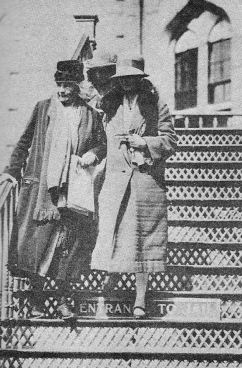
Gertrude Winslow (right) leaves the Charlestown State Prison with Mrs. Glendower Evans (left) and Mrs. Rosina Sacco (center) after a visit to Sacco and Vanzetti.
In a letter from the Dedham Jail House June 27, 1927, Bartolomeo Vanzetti writes to my grandmother:
“Dear Friend Mrs. Winslow:
Now, when you will reach my native home-just think to be at your own. You will be tired by the long trip and that is a good place for rest and restor. To went and left in a day, would be a senseless fatigue and there would not be time enough to explain things to my people. Besides that, the interpreter could be out of home or busy-while if you can stay there longer, all of you will have time to understand and explain one another. My sisters will be happy to have you there-they love all who help us and are proud of them. So please, just think to be at home and don’t leave the place until you feel well.”
As a child, I didn’t have these letters as a testament to the defendants’ humanity.  I only had concrete objects like the pink and blue baby blanket knitted by Mrs. Sacco for my brother Nick. He was 14 years older than me, born in 1927, the year they were executed. That blanket wrapped me as a baby many years later. It was a blanket that fascinated me because it had blue yarn on one side and pink on the other, possibly knitted that way before we were able to determine the sex of the unborn baby, so it was a true gender-neutral gift. The importance was the new life, not the gender.
I only had concrete objects like the pink and blue baby blanket knitted by Mrs. Sacco for my brother Nick. He was 14 years older than me, born in 1927, the year they were executed. That blanket wrapped me as a baby many years later. It was a blanket that fascinated me because it had blue yarn on one side and pink on the other, possibly knitted that way before we were able to determine the sex of the unborn baby, so it was a true gender-neutral gift. The importance was the new life, not the gender.
I also had other experiences. It was the innuendos and comments that were difficult for me to understand. I was being taught something, but I was not sure what.
Mary Martin, stirring up controversy in racist America of the 1950’s, sang loud and clear in the musical “South Pacific,”
You’ve got to be taught to hate and fear,
You’ve got to be taught to be afraid
Of people whose eyes are oddly made,
And people whose skin is a diff’rent shade,
You’ve got to be taught before it’s too late,
Before you are six or seven or eight,
To hate all the people your relatives hate,
You’ve got to be carefully taught!
The insidious thing is that the teaching is not overt and a child is left to figure out the subtext often denying their own humanity.
When my grandmother called “Nana” by our family and “Windblow” by all the cousins because, as children, they could not pronounce “Winslow,” would be coming to dinner, my parents would say, “We will not talk politics”.
Then there is a very clear image of meeting Mrs. Sacco on Mt. Vernon Street in Boston. I think I was with my mother; but there was a strangeness to the encounter and somehow it is intermingled with the Hurdy Gurdy man I was fascinated with, who was always near that spot and also happened to be Italian.
Looking back now, I see the tensions that must have existed between my father, an investment banker, and my mother’s father, a successful electrical engineer, and my paternal grandmother— this radical feminist, who was also one of the founders of the ecumenical Community Church of Boston. Fear of difference and loss and “other” was at the root of it all, then as it is now.
I see this mirrored so clearly today as the Republicans and the corporate world they represent are so terrified that their vast wealth will somehow be diminished by opening our country to immigrants that they are blind to the rest of the world, a world that is already diminished by poverty, bad health care, racism, horrific natural disasters, and so much more.
The poet Emma Lazarus understood the vision that this country was founded upon. In 1883 she wrote these lines, which appear on the pedestal of the Statue of Liberty:
“Give me your tired, your poor
Your huddled masses yearning to breathe free,
The wretched refuse of your teeming shore.
Send these, the homeless, tempest-tost to me,
I lift my lamp beside the golden door!”
The power and vision of that lamp is what we must never let be extinguished.
So once again the brave and courageous among us outraged by this inhumanity must speak up. More importantly, the Congress of the United States must speak out.
A thread that runs through the letters of both Niccola Sacco and Bartolomeo Vanzetti to my grandmother is the need to be brave, and so I leave you with the words of Bartolomeo Vanzetti, written four months before he was executed:
“April 19, 1927, Dedham Jail
Dear Mrs. Winslow:
Oh! Your mayflowers are dear and sweet and most heartly accepted. They remember me of Plymouth and of the woods: the woods which I love so much. They are the flowers of the woods. I thank you very much.
Was not that foolish and unjust to deny you admission? It seems impossible. I was sorry for me and for you. Let’s hope that I may see you again before to die.
Meanwhile keep up a brave heart, dear Mrs. Winslow.”
My grandmother was never to see him again, as she writes in her memoir:
“…when we reached Rome having successfully concluded our visits to the homes of both Italians, we sent a cable to them in the Death House in Charlestown, telling them that we had seen their families and delivered their messages. I have always hoped that this may have brought them a ray of comfort in their last hours.
“Mrs. Ratcliffe and I read of their execution on August 23rd in an Italian newspaper as we sat on a bench in the little village of Argentiere in the French Alps.”
 Judy Walcott retired in 2014 after over 20 years of teaching at the Adult Learning Center at North Shore Community College. She also taught reading in the Gloucester Public Schools and is a Certified Dyslexia Therapist. Before becoming involved in education focused on reading, she worked at Facing History and Ourselves, an education project dedicated to the Holocaust and the Armenian Genocide. It was here that the parallels concerning racism and bigotry and the work of her grandmother began to germinate.
Judy Walcott retired in 2014 after over 20 years of teaching at the Adult Learning Center at North Shore Community College. She also taught reading in the Gloucester Public Schools and is a Certified Dyslexia Therapist. Before becoming involved in education focused on reading, she worked at Facing History and Ourselves, an education project dedicated to the Holocaust and the Armenian Genocide. It was here that the parallels concerning racism and bigotry and the work of her grandmother began to germinate.





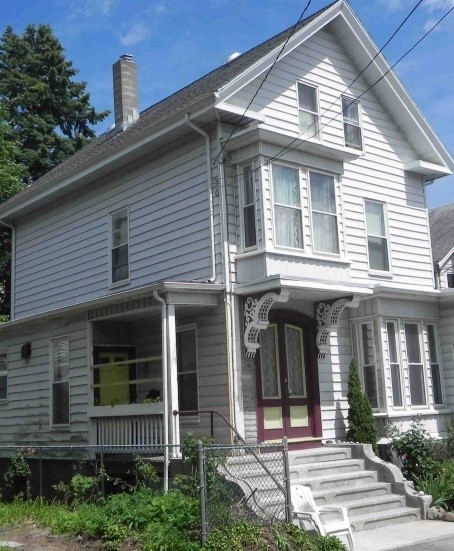



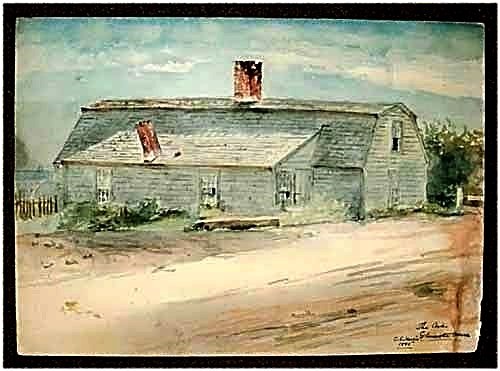

 Prudence Fish, of Lanesville, is a published author and expert on antique New England houses. Read
Prudence Fish, of Lanesville, is a published author and expert on antique New England houses. Read 

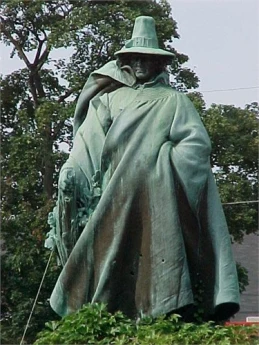


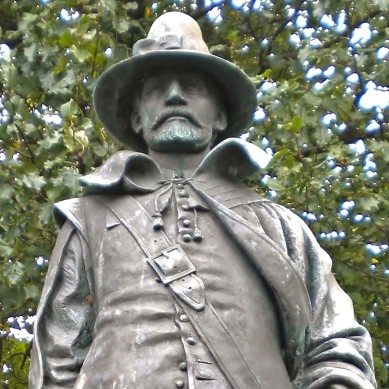

 Mary Ellen Lepionka lives in East Gloucester and is studying the history of Cape Ann from the Ice Age to around 1700 A.D. for a book on the subject. She is a retired publisher, author, editor, textbook developer, and college instructor with degrees in anthropology. She studied at Boston University and the University of British Columbia and has performed archaeology in Ipswich, MA, Botswana, Africa, and at Pole Hill in Gloucester, MA. Mary Ellen is a trustee of the Massachusetts Archaeological Society and serves on the Gloucester Historical Commission.
Mary Ellen Lepionka lives in East Gloucester and is studying the history of Cape Ann from the Ice Age to around 1700 A.D. for a book on the subject. She is a retired publisher, author, editor, textbook developer, and college instructor with degrees in anthropology. She studied at Boston University and the University of British Columbia and has performed archaeology in Ipswich, MA, Botswana, Africa, and at Pole Hill in Gloucester, MA. Mary Ellen is a trustee of the Massachusetts Archaeological Society and serves on the Gloucester Historical Commission.


 I only had concrete objects like the pink and blue baby blanket knitted by Mrs. Sacco for my brother Nick. He was 14 years older than me, born in 1927, the year they were executed. That blanket wrapped me as a baby many years later. It was a blanket that fascinated me because it had blue yarn on one side and pink on the other, possibly knitted that way before we were able to determine the sex of the unborn baby, so it was a true gender-neutral gift. The importance was the new life, not the gender.
I only had concrete objects like the pink and blue baby blanket knitted by Mrs. Sacco for my brother Nick. He was 14 years older than me, born in 1927, the year they were executed. That blanket wrapped me as a baby many years later. It was a blanket that fascinated me because it had blue yarn on one side and pink on the other, possibly knitted that way before we were able to determine the sex of the unborn baby, so it was a true gender-neutral gift. The importance was the new life, not the gender. Judy Walcott retired in 2014 after over 20 years of teaching at the Adult Learning Center at North Shore Community College. She also taught reading in the Gloucester Public Schools and is a Certified Dyslexia Therapist. Before becoming involved in education focused on reading, she worked at Facing History and Ourselves, an education project dedicated to the Holocaust and the Armenian Genocide. It was here that the parallels concerning racism and bigotry and the work of her grandmother began to germinate.
Judy Walcott retired in 2014 after over 20 years of teaching at the Adult Learning Center at North Shore Community College. She also taught reading in the Gloucester Public Schools and is a Certified Dyslexia Therapist. Before becoming involved in education focused on reading, she worked at Facing History and Ourselves, an education project dedicated to the Holocaust and the Armenian Genocide. It was here that the parallels concerning racism and bigotry and the work of her grandmother began to germinate.